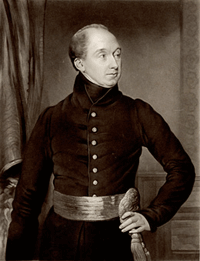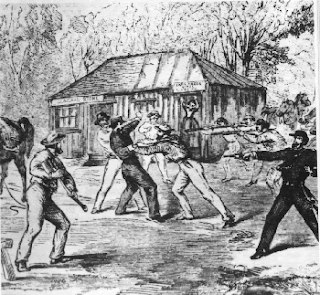Santa coming to a kid in the Australian bush still seems
a novel idea to me, but he did or so I believed. A novelty song in Australia at
the time called Six White Boomers, was based around the idea of Santa swapping
his reindeers for six white kangaroos.
The reindeers would probably get heat stroke during the delivery run to
Oz and were changed for the roos. I always thought that Santa should change out
of his Santa suit into something cooler, say, singlet, shorts and flip-flops.
All red of course.
 |
| CHRISTMAS GUM TREE. 1959. |
My half-sisters ( they’re twelve and thirteen years older
than me) and I always were thinking of Santa’s welfare. They had started the
tradition of leaving out food and a cool drink for a hot and weary Santa.
However, it wasn’t a glass of milk as you would suspect but a glass of beer.
Folks, there’s nothing as refreshing as a cool glass of beer on a hot day. Why
should Santa miss out? As we found out years later, Dad was the one that played
Santa. He was the bloke that delivered the presents, ate the food and drank
the beer.
Christmas morning couldn’t come quick enough. I remember
finding it hard to sleep as any kid would. The thought of Santa coming and the
heat wasn’t conducive to sleep. I was ready to unwrap those presents at four in
the morning but I was always told to go back to bed. I had to hang on until
six. It was worth it. The tree had presents piled high around it. I tore at the
presents like I was crazed. I think I opened everyone else’s also. I remember
getting toy guns, cowboy and Indian ( with headpiece) suits and even a tepee
for presents. Bush Santa was the greatest.
 |
| CHRISTMAS LUNCH. 1959 |
By the time Christmas lunch was ready the heat was
intense. You didn’t want to go outside. I don’t know how my mother cooked a hot
lunch during the hottest time of the year. As a result, she always looked a
little tad stressed. It was tradition to have a hot English lunch. Dad always
helped. He would bake and glaze a leg of ham, a tradition I still carry
on.
 |
| MUM LOOKS STRESSED. |
So on a hot day we sat down for a hot English lunch of
roast turkey, roast chicken and roast ham with lots of stuffing and vegetables
for at least ten to twenty guests. So much that
there was always leftovers. Dessert was a plum pudding with custard and
my mother’s triple with a heavy taste of sherry. They were the greatest
Christmases and every year I still try to emulate them (minus the cattle
station and the gumtree).
Wishing you all a Merry Christmas and a Happy New Year.
And I hope the weather isn’t too hot wherever you are.
















.jpg)










